We have known Ashley for a while now and continue to be impressed by her creative approach to human resources. We thought you might want to get to know Ashley, too, and hear more about what’s happening at her employer, True Manufacturing.
Let’s get to know True Manufacturing first.
We are a privately held business focused on commercial and high-end residential refrigeration manufacturing. We are a global company and have offices all over the world and currently manufacture all of our products in Missouri, in over 4 million sq. feet of manufacturing space.
Being a family-owned business, we are particularly passionate about creating an environment and culture that is people first focused, providing employment and career advancement opportunities for individuals at all skill levels.
What brought you to True Manufacturing?
In June, I will be celebrating my 17th year at True. I started here in 2006, when I was offered and accepted a position with them before I even graduated college! You might say I am kind of a unique story in today’s world, but my story resembles a lot of the stories of the people that we have at True. You will find that many people come and stay for a long time, really for the balance of their careers! We have people that will join us as a secondary career and, they often say things like “Oh my gosh, I wish I would have found you guys initially!”
Being in human resources wasn’t always my plan though. I graduated with my bachelor’s degree from Missouri State, and was going to be a nurse just like my mom. The healthcare field runs heavily in our family, so I wanted to be a nurse because I wanted to help people. This was really something that was important to me growing up. But then one day I was in a cadaver lab, and I had these little pins to find these tendons and it like hit me like a smack in the face like, “Timeout, I don’t really know that this is my jam!” it was at that moment that said I want to help people, but I have to figure out how to do it in a different way. And so I transitioned to more of the business side and really started focusing in on HR. I ended up getting a business degree with an emphasis in HR.
I was at a career fair on campus and actually passed the True booth. I happened to look back for whatever reason and I saw they had posted that they were hiring for HR positions. That caught my attention, and we started chatting. The rest is history!
You started in 2006 and you’ve likely had progressive responsibilities over time. Talk me through how the scope changed, what area of HR you started in and how you moved to where you are now.
When I started in 2006, I was doing HR generalist type work really focusing in on workers compensation, eventually ascending to become their Workers’ Compensation Manager. I did that until about 2012 or so, and then ascended into the Assistant HR director position. In 2014, the individual responsible for leading the overall HR function decided to retire after 30+ years, and so I was promoted into the role I’m in today. Over time, I really made my way around to each of the different functional areas trying to learn everything!
You said your story is similar to a lot of the other stories of True team members. What is the average tenure and what would you say contributes to retention?
The average tenure of a team member is 12 years. I attribute this to a multitude of things. The family-owned business is key. Although we’ve grown to being a medium sized organization from the humble beginnings back in 1945, we really haven’t lost that personal individualized touch. Making sure that we are invested in the person and their growth, highlighting their potential and really tapping into their strengths. We really try to help team members build out what they want to do, and explore how we can find the organizational need to fit around that.
We are a relatively structurally flat organization. We do that for a purpose because we want people to be able to create their own destinies. If people want to be able to try something new, move to a different department, gain a different skill, or go to school to learn something new, we will support that. We want our people to be the best person they can be, personally and professionally.
We have several people who have moved to many departments within the company. Some grew up through our factory production line and now are directors of quality. Our whole strategy and focus is, “If you can dream it, you can do it and we will help you”. We’ll help you create your own path. We want to make sure that that path is here at True. We don’t want people to have to go outside of the walls of True to achieve what they want to achieve professionally and personally. We want to be a partner with them, helping and working with them along the way.
Since you started leading the HR team back in 2014, what accomplishment(s) are you most proud of?
I love this question! When I first came into this position, there were over 50 people in the HR department. We had a lot of doers, but didn’t necessarily have a lot of people who were focused on strategy and efficiency. I helped bring about changes in technology and processes, lean improvements, and really did a deep dive into the skillsets within our team to make sure that we had the right people doing the right things.
I also helped to develop an internal legal department here onsite at True. We built an internal talent development team too. We established a leadership development program for our leaders to ensure they had the appropriate training and baseline to help them ascend and be successful.
We started a DEI program, finetuned a lot of our talent acquisition strategies, and also introduced more of the marketing side of the people business. We historically have been a very private company, just having that family-owned nature. And while we would market our products, we didn’t talk a lot about our people. I helped to get us more active on social media so that our team members’ families, and our community, could get a vision of what True is, and can be, for them as an employer or a community partner.
As far as team member voice, my guess is that that you have pretty good relationships across the business with your team members. How do they share their feedback and what are your listening mechanisms?
From a factory floor team member perspective, we have an employee relations team. They’re called HR reps, and their sole function every single day is to be out on the factory floor engaging with team members. Whether it’s wishing them a happy birthday, asking them how their daughter’s softball game went, helping them solve problems, getting them the resources that they need or doing anniversary follow up sessions with them – they are personalizing the experience and touching base with team members all the time.
New hires will engage with our HR business partners for five weeks. Then every team member, at least on an annual basis, will have a follow up or feedback session with our HR team to make sure we can keep the conversation going. Aditionally, when you contact the HR team you’re going to get a live person. You’re never going to get a generic help desk or a recorder. You’re going to talk to a live person who’s going to be able to empathetically assist with your problems.
We also do regular “employee involvement” meetings, where a group of senior leaders from different functional areas will randomly pick a group of team members to come and sit with us in a room. We’ll have some predetermined questions that we give them such as, “what do you think is going right? What do you think needs improvement? Do you feel like your skills are being used to the fullest extent? Do you know where you can get further training or development?” From those meetings, we take the actionable items that include a continual feedback loop for team members, with what we heard and what can be done in response to the feedback.
Our ultimate goal is to make sure our team members know that we have an open door at any time and we want to hear their feedback. I think more important than hearing feedback is following up on the feedback. I think we do a really good job of that, which encourages the team to speak up more because they know they are being heard. So many of the things that our team members have suggested have resulted in policy changes or procedural changes based on their feedback, and they’re able to see that. It adds a lot of credibility to the process!
Talk to us a little more about communication channels. What are effective ways that you share information? How do you remain connected across your different business lines?
Every week we have a Monday Morning Meeting that includes many of the company’s business unit department functional heads. The meeting is basically a general update of different things that are going on throughout the company. It’s a time for people to share information. It’s also a time for people to ask questions and that information then gets emailed out to the whole company.
The information also gets shared in meetings on the factory floor. One of our biggest communication challenges is that most of our population consists of hourly factory workers who don’t have access to computers or e-mail. To help ensure this “deskless” workforce is well connected and informed, we’ll stop work at designated times during the week and share announcements with the team members. These announcements may consist of company updates, metrics, customer visits, customer service or order wins, and any policy changes that need to be reviewed. We also use this time for reward and recognition, congratulating someone for a job well done or wishing them a happy anniversary! And, we have a peer recognition program where a lot of our leaders take time to recognize their achievements.
What else do you think is important to know that makes True successful?
From a business perspective and with our people as well, we really try to be vertically integrated. We want to make sure we’re in control of our own destiny, and be self-sufficient. We want to be able make everything that we need to make cooler, and for the most part, we do!
An example of how we follow this same principle with our people is through an Aspiring Manager Program. It’s really a steppingstone to get individual contributors exposed to different departments, and the skills needed to set them up for success. This is similar to how we structure our CDL program. We don’t expect you to go out on your own and learn how to drive a truck. If you want to drive a truck, we’ll teach you how to drive a truck. We developed our own internal CDL training program because we wanted to walk alongside our team members in this growth opportunity. I think when you create those opportunities within the walls of your organization, where people feel comfortable and they know that they don’t necessarily have to go outside of those walls to obtain that skill, they’re much more likely to lean in and take those opportunities. I think this also contributes to why we have the tenure that we have at True, because they know we’ll support them with their career goals – and they have watched this type of growth happen for their fellow team members too. Internal promotion and development is huge, and is really at the core of our people strategy.
What is a people strategy at True that might surprise someone, maybe that they wouldn’t expect from a manufacturing organization?
We have recently implemented Perk Time. Time is important to everybody, especially post COVID. In a manufacturing environment, time has an even more highlighted value because everything is measured, everything is driven by time. With the Perk Time program, we have empowered our leaders to be able to reward exceptionally performing individuals or teams by allowing them to leave early for the day and still be compensated for their time.
From a manufacturing standpoint, to empower your leaders to be able to have that opportunity to do this is a bit unique. Perk Time is used in a variety of different ways – sometimes it’s a surprise leave early day, and other times its scheduled out and the team member gets to choose the day.
Another thing that our team members really enjoy that might surprise people is our Giving Back to the Community program. Periodically, we will look through our inventory of coolers and be able to designate a certain allotment whereby for our team members to nominate different organizations, nonprofits, or schools in need of refrigeration. We then randomly draw a winner, and the cool thing is that these team members get to deliver a milk cooler, for example. Something that they may have very well helped build, delivered to their child’s school and giving them something that they need. It’s really a prime example of purpose and meaning in work. It is not just a job!

You recently spoke at STL Rethinks Talent sharing some really incredible ways True is getting creative around talent and retention.
With the unique talent landscape that we have all experienced over the last few years, we have really taken a deep dive into our hiring strategy. We’re focused on keeping those core strategies that have worked in the past, while also understanding we’ll need to be forward thinking to anticipate and adapt to our new normal.
Previously, you may have had your exact strategy set, trying to source or recruit the exact fit for hiring managers who had very stringent requirements. We know that in our labor market today, that’s not totally applicable – you can still find the right or great fit, but just in a different way.
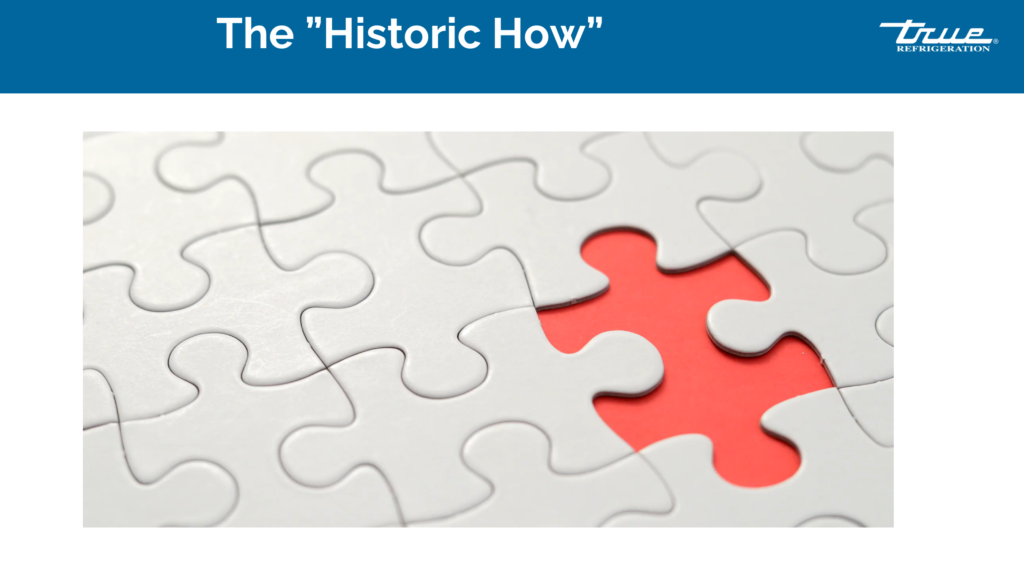
So the “How Now” of the present day shows the puzzle piece in the center with the rest of the puzzle being built around it. The question then becomes – how do you know what puzzle or picture you are building towards. This comes down to two concepts – The How…. And the Who experience requirements.
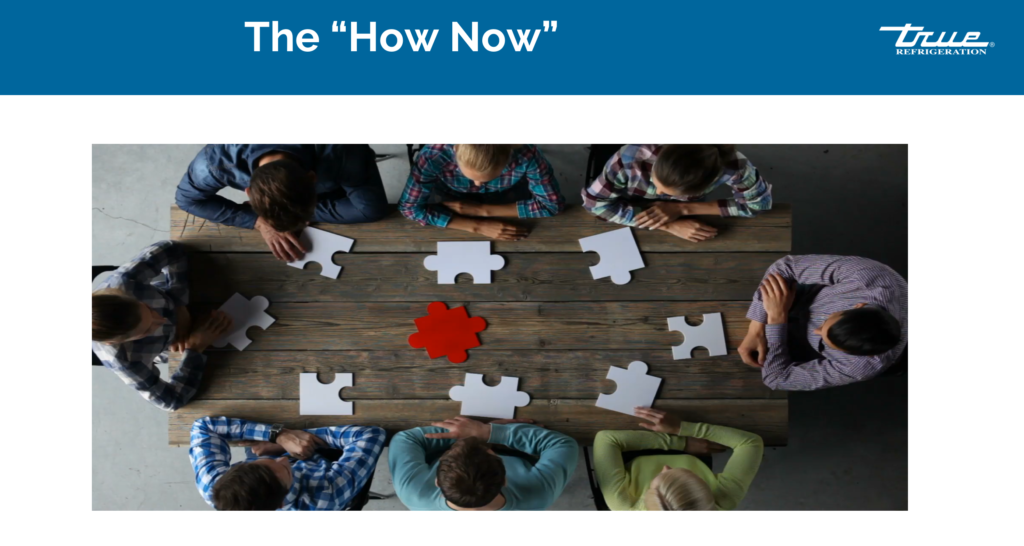
For the how,
This can really vary based on culture and industry. In manufacturing, the ‘how’ was pushing the boundary on the operational norms, implementing more flexibility in a very traditionally structured industry. We have two programs that have been incredibly strategic and aided in this effort:
- Implementation of PT Program
- Growth of our Flexible Workforce
For those of you familiar with the structured nature of manufacturing and assembly line work, every minute counts. So when there was an introduction of PT individuals who were going to be coming and going at all times during the shift, a large change management opportunity arose.
Getting buy in and acceptance, especially from the plant floor was key – involving them in the interview process, and approving the shift options with that individual so we could get a win/win for the team member and the plant needs.
We really took the opportunity to celebrate wins, finding many individuals who had unique talents such as welders who are in high demand, and who we would not have normally been able to attract under our previous shift options.
We were also able to engage and introduce a new population to the manufacturing industry who would have previously shied away due to needing a non-traditional schedule– this included everyone from stay-at-home caregivers, to firefighters, to pilots, to retirees looking to supplement their income, to individuals in the gig workforce and everyone in between
Since then, we have grown this program to offer over 30 shift options throughout the company, now comprising approximately 10% of our workforce.
Additionally, we have implemented flexible work incentives – moving people to the work (at a different location) vs. moving work to the people. They receive an hourly rate pay increase and gas incentive to help make this program successful.
Next, moving on to the “Who”
Tapping into our roots as a family-owned business, being involved and supporting the community in which we operate is especially important to us. Here is a snapshot of many of the community partner programs that True is involved in.
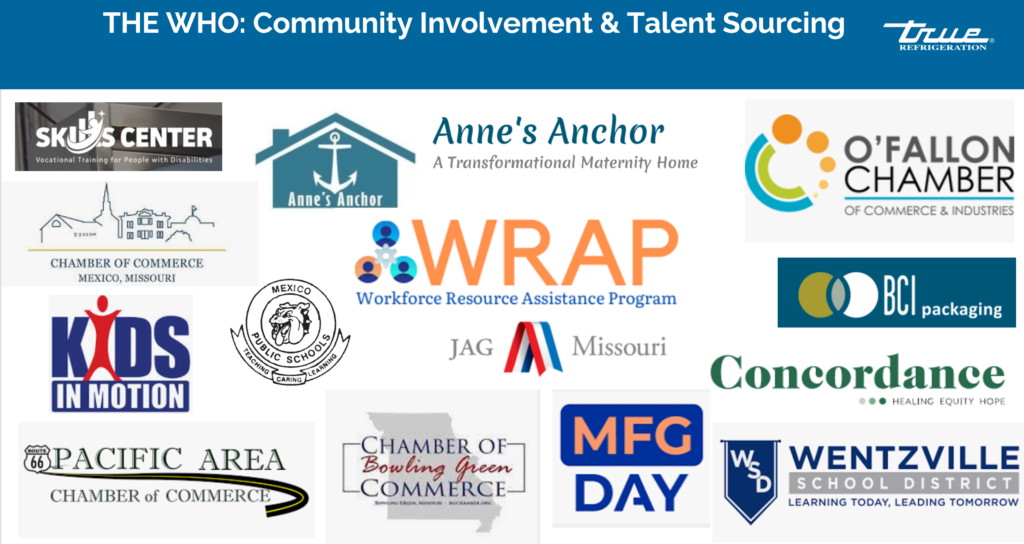
When we think of building a community, we think of building the community and culture within the organization. However, we believe there’s also an equally as important step in building the community outside of your organization. When we can marry the two together, we create a pathway for a nontraditional talent sourcing strategy that meets 3 objectives:
- Retention Measures with Current Employees:
- Increases Engagement Measures & instills a sense of pride with employees that their organization is investing in the community in which they live and work.
- Recruiting for current Talent Needs:
- Tapping into underutilized and alternative staffing solutions which we will discuss more in depth on the next slide
- Building a Pipeline for Future Needs
As an additional benefit, tapping into these different sources of talent with all different backgrounds, needs, and age/ability can complement and drive your DE&I and ESG initiatives.
One of our top success stories is our partnership with BCI.
True has been partnering with the Boone Center or BCI for just under 5 years. BCI’s mission is to support individuals with disabilities with personal growth and development through a continuum of employment opportunities.
BCI candidates complete an 8-week course at BCI in a mock True environment – we have set up conveyors, workstations, tools, parts presentation, etc. This allows them to learn in an environment they are comfortable in, and master the needed skills before transitioning over to True’s facility. This also includes soft skill development – such as communicating and taking direction from leadership. Currently, we have 33 individuals (and counting) at True from the BCI program. The retention of these individuals is higher than our traditional workforce.
Keys to success with this program are engaging the current True team members – explaining the purpose and background of the BCI program, assigning True mentors, training True supervisors on best strategies for communication and holding team members accountable, and engaging the parents of the BCI team members – whether it is going to BCI for a presentation about the program, having them at True for a tour, or talking through benefit coordination.
If you haven’t visited BCI or learned about their mission, I highly encourage this. Our partnership has truly been a win/win. Our team members have truly embraced these individuals, and they have become part of the True family, positively reminding us every day of the value of remembering that we are able to “get to work vs. have to work”.
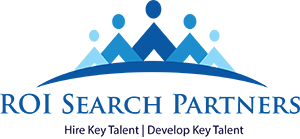
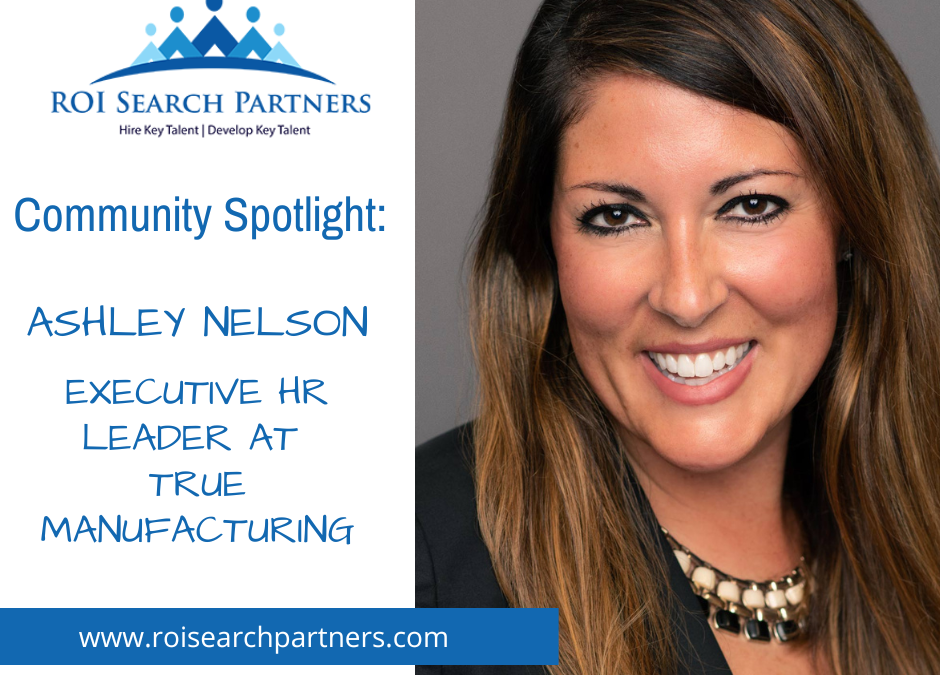
Recent Comments